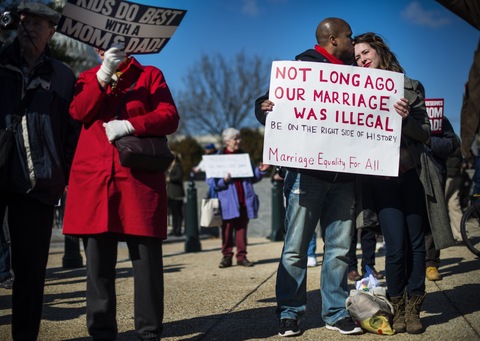We’ve all been there- stuck behind a smoker walking to class. You breath in the smoke, it gets caught in your hair, and you can still smell it later. But these things are trivial compared to the harmful effects smoking can have on all of those involved. Smoking not only affects the smoker, but also the entire campus. Colleges and Universities across the country are implementing smoke-free-campus policies. In these policies, indoor and outdoor smoking will be eliminated across the entire campus, and methods of enforcing the policy will be put into place. As of January 2, 2013, at least 1,129 college or university campuses in the U.S. have adopted 100% smoke-free campus policies. Penn State should implement a similar policy for the health and safety of nonsmokers as well as smokers themselves, in addition to improving the quality of the school and campus.
A smoke-free campus policy should be implemented for non-smokers harmfully affected by the risks involved with secondhand smoke. Secondhand smoke has been proven to have harmful effects in any amount. When there are smokers on campus, everybody is affected. This includes other students, faculty, staff, and even visitors. Across the country, the United States Census Bureau estimates that almost 20 million students enrolled in a degree-granting program, with almost 40,000 of them attending Penn State’s University Park, in addition to the faculty and staff that work at Penn State and other campuses all over the country (“Newsroom”). Cigarette smoke leads to air contamination, which in turn affects every one of these people. As US Surgeon General of 2006, Richard Carmona, said, “The debate is over. The science is clear: secondhand smoke is not a mere annoyance, but a serious health hazard” (TobaccoFreeOregon). Cigarette smoke sends more than 7,000 chemicals, including hundreds that are toxic and about 70 that cause cancer into the air that those on campus breathe (“Secondhand Smoke Facts”). Also, exposure to secondhand smoke causes an estimated 3,400 lung cancer deaths each year among nonsmokers (“Secondhand Smoke Facts”). In addition to cancer, nonsmokers who are exposed to secondhand smoke at home or work increase their heart disease risk by 25 to 30 percent (“Secondhand Smoke Facts”). Clearly, there is no “risk free” secondhand smoke- even the littlest bit is still harmful. It is not fair that those who make the decision to avoid tobacco and cigarettes are still exposed to the harmful effects it can have. All people have the right to choose what goes into their bodies, and how they want to take care of their health, and one person’s decision should not be allowed to jeopardize somebody else’s health. If smokers still want to choose to inhale tobacco into their bodies, they have the right to, but it should be done off campus. Four out of five students choose not to smoke (TobaccoFreeOregon). The choices and health of four students should not be altered and possibly harmed by one student. If someone chooses not to smoke to avoid the negative and harmful consequences it has, they should not have to risk them through secondhand smoke.
A key to decreasing the amount of smokers in the country is prevention, and a smoke-free campus would prevent many students from becoming lifelong smokers. Smoking is bad for one’s health, and something nobody should have to deal with. With a smoke-free campus policy, fewer students would face the risks of smoking, and the harmful health effects that come with it. The risk of tobacco use peaks between 18 to 25 years of age, or, the exact years when most students will be in college (“Colleges and Universities”). If a student is not allowed to smoke on their college campus, they will most likely not pick up a cigarette in the first place, and smoking will never become a habit. By banning the use of cigarettes in the years when a person is most at risk, the rate of smoking will greatly decrease, creating a healthier environment overall. A smoke-free campus could be the turning point in choosing not to use tobacco. Along with this, the number of smokers who initiate smoking after eighteen years of age has increased in the past few years (“Colleges and Universities”). If college campuses, like Penn State, adopted smoke-free campus policies to prevent smoking, we may be able to see that number begin to decrease again.
A smoke-free campus policy would not only decrease the likelihood that a student begins to smoke, but it would also decrease the number of students already choosing to smoke occasionaly. The progression from occasional, or social, smoking to daily smoking almost always occurs before the age of 26, again, during college years. By banning smoking on campus, this progression would be interrupted. A daily-smoking habit could be stopped before it happened. Fewer students would rely on cigarettes, and addiction could be stopped, therefore creating a healthier lifestyle for them. Without becoming daily smokers, they will have an easier time choosing not to smoke. This policy would be beneficial for those students who do not finish the progression, and will have a much easier time quitting in the future.
While much of the focus has been on the health of the student smokers, a no-smoking policy would be valuable for faculty smokers as well. It is very possible that a policy for a smoke-free campus could be that extra push that someone needs to finally quit. According to a Gallup poll that was done, 79% of all smokers wish they could quit. 59% of students stated that they had tried to quit in the last year (Saad). Eliminating smoking on campus would only facilitate the process of quitting. Making it harder to smoke only makes it easier to quit. Especially at Penn State, we have an incredibly large campus. In some buildings, it could be over a ten-minute walk just to get off campus to smoke for a few minutes, only to walk ten minutes back to an office. Smoking would be made extremely inconvenient, and would hopefully inspire more to quit, like the majority of smokers wish they could. The American Cancer Society reports that one of the most effective ways to get people to quit smoking, or at least to drastically cut back their smoking, is to prohibit smoking in the workplace. They have estimated that smoke-free workplaces bring about a 29% reduction in cigarette use (Saad). A smoke free workplace, or college campus, will help to reduce smoking.
Penn State is a dry campus, meaning that no alcohol is allowed on campus or in the residence halls. If the Penn State administration is looking out for the students’ health and safety by banning alcohol, why is tobacco still allowed on campus? While alcohol and smoking are both extremely harmful to one’s health, studies and statistics have shown that smoking contributes to more negative health effects than alcohol, as well as plays a role in more deaths. While about 2.5 million people die from alcohol each year, almost 6 million die from tobacco use. By 2020, tobacco is expected to account for ten percent of deaths worldwide, and alcohol is expected to account for 3.8 percent (“WHO Report: Smoking and Drinking Cause Millions of Deaths Worldwide”). It is clear that both substances are dangerous, but right now Penn State is protecting its students from only one, and not the most harmful one.
In 2008, the state of Pennsylvania followed suit of many other states in passing a law to ban smoking. Pennsylvania specifically banned smoking in all non-hospitality workplaces, but unfortunately still allows smoking in bars and casinos. Due to these restrictions on public smoking across the country, more than a quarter of current smokers say they are smoking less, and this is not including former smokers who quit due to the new restrictions. Penn State is a workplace as well as a learning environment, and as stated earlier, creating smoke-free workplaces has strong impact on decreasing the amount of smoking. While Penn State does not allow smoking in its buildings, it is not only the buildings that should be considered the workplace. Often, “student” is considered an occupation. For students, a college campus is both a home and a workplace. Students should have the right to a smoke-free workplace, as all other workplaces in Pennsylvania. Students as well as the faculty members have to walk to different buildings as part of their jobs. If walking through campus is part of the job description, and smoking is banned in workplaces, smoking should be banned on all parts of campus. This will not only improve the health and safety of those on campus, but also follow the policies that Pennsylvania has created.
From a more administrative view, a smoke-free campus policy will save both time and money. First, and more obviously, without cigarettes on campus, time and money will not have to be spent picking up tobacco litter, like cigarette butts, or cleaning smoking areas. The staff that currently does it would not have to be paid for it, and could instead do something more productive and beneficial to the university. Universities would no longer have to take the time to deal with complaints about smoking on campus, because smoking on campus would no longer exist. Also, universities would no longer have possible legal liability for secondhand smoke, which in the case of an issue, could result in a large amount of money being saved. Although there has not yet been a college to face a secondhand smoke lawsuit, there have been plenty of similar cases in apartment buildings and other workplaces. For example, the Chauncey family, living in a condo, sued the homeowner’s association for continuing to allow smoking. Even after constant complaints, the homeowner’s association, other tenants, and neighbors did nothing to stop the smoking. The jury found that the homeowners association and management company were liable for breach of contract and negligence, and awarded the family $15,500 for both physical and emotional damage the secondhand smoke may have caused (Kalfus). Apartments and condos are just like residence halls, except residence halls may be even closer and fuller. In New Orleans, a mother sued for the death of her child do to second hand smoke. The case was worth 4.5 million dollars. Her son, never having been a smoker, died of cancer after working in a workplace for 15 years that allowed smoking (Kultzman). Penn State, a workplace, could be in the same situation. Similar cases have occurred, and it’s only so much time until it happens on a college campus. The time and money saved on smoking could be put to better use in further developing and improving Penn State University.
Implementing a no-smoking policy could improve the overall caliber of the university. President Robert K. Knight of Clark University, a university with a tobacco-free campus, states, “Since becoming tobacco-free, our enrollment has increased,” a sentiment shared among many other colleges who have implemented similar policies. 69% of high school students said they would choose a smoke-free campus over one that allowed smoking (TobaccoFreeOregon). Victoria Galanopoulos, a student at Portland Community College offers an interesting perspective when she says, “In addition to representing students, I’m also a parent. Like many other parents, if given the choice, I would like to send my child to a college that provides a tobacco-free campus, and now we have that option” (TobaccoFreeOregon). Penn State could see a higher selection of students to choose from, and improve the overall caliber of its students, and therefore the entire university. Knight not only considers the students and adds “there has been a strong demand in the community to use our facilities. Our transition to tobacco-free campus was a positive experience” (TobaccoFreeOregon). By banning smoking, the community will want to use the University’s facilities as well, creating a stronger relationship between the university and the community.
A smoke-free campus is a great idea, but the issue of how to enforce it arises. Most schools currently with a no-smoking policy in place offer a three-strike system. Often the discipline progresses from a warning for the first offense to a fine, usually around $20 for the second offense, or the option to clean up tobacco litter for a couple hours. On the third offense, the student is put on probation, where if offenses continue to occur, could lead to much harsher consequences, sometimes even expulsion. Especially in the early months after implementation, volunteers can simply walk up to smokers and ask them to put out their cigarettes, and educate them about the resources for quitting that are available to them. Some schools offer coupons for cheap nicotine replacements like nicotine or gum. By enforcing the smoke-free campus policy in this way, students would most likely choose to obey it. Penn State is a huge campus, so it is clear that not every single smoker would be caught every single time they smoked a cigarette, however, the policy and threat of punishment are still there, and most likely if the smoker continues to smoke, he or she will be caught. By having a clear, consistent method of enforcing the smoke-free campus policy, it would be a simple, positive policy to implement.
The big question about implementing a smoke-free campus policy is why not? If somebody, or a group of people, has the ability to improve the quality of living, why wouldn’t they take the opportunity? It has been proven over and over again how bad smoking, as well as secondhand smoke, it for one’s health. There are no benefits to smoking, only harmful, negative consequences. If the school can help to protect its students from these risks, it should. Maybe the school is worried about the backlash and criticism it would receive from those against the policy, and smokers specifically. However, in reality, three-quarters of people, including a majority of smokers, believe that it is okay for colleges to prohibit smoking on their campuses.
For the health and safety of all students, faculty and staff, as well as too improve the University as a whole, Penn State should implement a smoke-free campus policy. As President Joe Robertson of Oregon Health and Science University reports, “OHSU is committed to helping our employees, students, patients, volunteers, and visitors live longer and healthier lives- that’s why all OHSU properties are tobacco free.” Penn State should be as committed to helping those on campus live longer and healthier lives. By banning smoking on campus, Penn State will only be encouraging a healthier, safer environment for its students, faculty, staff, and visitors, and improving the quality of life for many.
I added in the paragraph about the dry campus later… do you think it fits and is persuasive? Should I move it somewhere else? Thanks.





